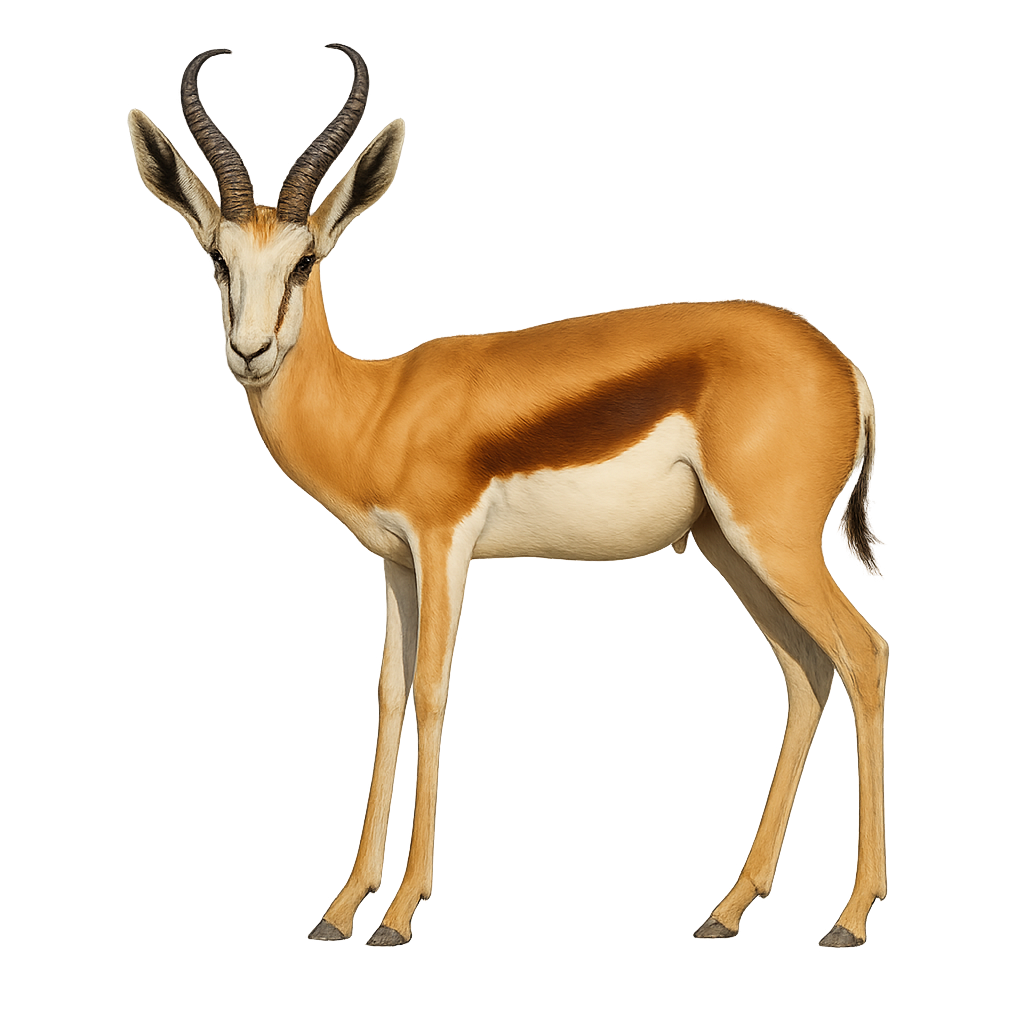Your wildlife photography guide.
Explore the springbok in detail, study its behavior, prepare your shots.
Where to observe and photograph the springbok in the wild
Learn where and when to spot the springbok in the wild, how to identify the species based on distinctive features, and what natural environments it inhabits. The WildlifePhotographer app offers tailored photography tips that reflect the springbok’s behavior, helping you capture better wildlife images. Explore the full species profile for key information including description, habitat, active periods, and approach techniques.
Springbok
Scientific name: Antidorcas marsupialis

IUCN Status: Least Concern
Family: BOVIDAE
Group: Mammals
Sensitivity to human approach: Suspicious
Minimum approach distance: 30 m
Rut period: February to April
Gestation: 168-175 jours
Births: August to September
Habitat:
Semi-deserts, dry savannas
Activity period :
Primarily active during the day, with peak activity in the morning and late afternoon.
Identification and description:
The Springbok is a small antelope found primarily in the savannas and grasslands of South Africa, Namibia, and Botswana. It typically stands about 75 cm at the shoulder, with a body length of 1.10 to 1.30 meters, and weighs between 30 and 40 kg. Its coat is primarily white and brown, with a dark line running along its back and a large white patch on its sides. What sets the Springbok apart is its ability to perform characteristic jumps, known as "pronking," where the animal leaps into the air with its legs extended, often to signal danger or to impress another individual. The Springbok is herbivorous, feeding primarily on grass and leaves. While it remains relatively abundant in its habitat, it is sometimes threatened by hunting and habitat loss.
Recommended lens:
400 mm – adjust based on distance, desired framing (portrait or habitat), and approach conditions.
Photography tips:
Approach slowly and discreetly, using a telephoto lens to avoid disturbing the springbok, a quick and alert animal that can easily move away if disturbed.
Photograph early in the morning or late in the afternoon, when the light is soft and the springbok is more active, often grazing or moving in groups in the savannas and grasslands.
Capture moments of natural behavior: The springbok is famous for its characteristic jumps ("pronk"), creating unique opportunities for dynamic photos of these moments.
Be patient and respectful: While the springbok is often seen in large groups, it remains sensitive to disturbances. Wait for moments when it is calm and visible without disrupting its natural behavior.
The Springbok is a species of minor concern, but it is always important to respect its natural environment. Do not disturb its feeding or social behaviors, and follow local conservation rules to preserve this species in its natural habitat.
The WildlifePhotographer App is coming soon!
Be the first to explore the best nature spots, track rutting seasons, log your observations, and observe more wildlife.
Already 1 449 wildlife lovers subscribed worldwide

